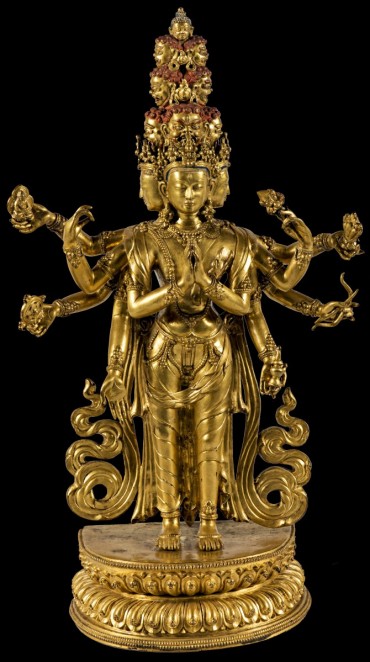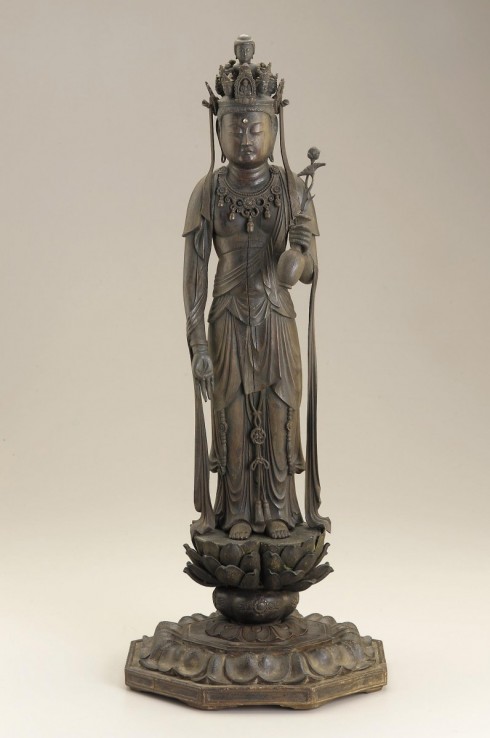Tibet or China, 17th–18th century; gilded bronze; 15 15/16 x 9 1/2 in.; Jacques Marchais Museum of Tibetan Art, 85.04.0160.
Bodhisattva Avalokiteshvara (Kannon)
Japan, Heian period, late 12th century; wood; Freer Gallery of Art and Arthur M. Sackler Gallery, Gift of Charles Lang Freer, F1909.350a-b.
Both of these sculptures descend from the Indian Eleven-headed Avalokiteshvara. Yet striking differences are evident in the exuberant Tibetan work compared to the restrained Japanese example. Nevertheless, this esoteric manifestation of Avalokiteshvara appears in temples throughout Asia, attracting pilgrims in many regions.





